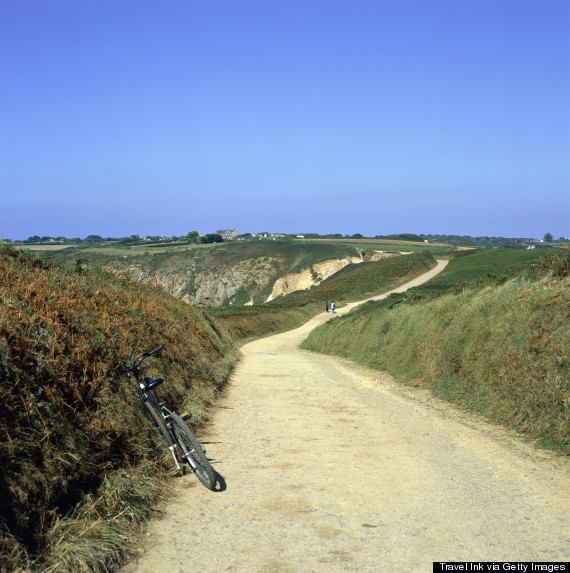WASHINGTON, D.C. – Gov. Terry McAuliffe today announced major projects to improve transportation on one of the most heavily traveled corridors in the country – I-95 and I-395 in Northern Virginia. Improvements are planned for both ends of the 95 Express Lanes to ease the traffic bottleneck in Stafford County in the southern end and to extend the express lanes to the D.C. line in the northern end.
“These are significant transportation improvements that will move more people and commerce through an interstate corridor, and a critical jobs corridor,” said Gov. McAuliffe. “In working with our private sector partner Transurban and local governments, we will fix the bottleneck on the southern end in Stafford County, and travelers will have the choice of taking an express trip from south of Garrisonville Road all the way up to the D.C. line. This represents a true multi-modal solution offering commuters a reliable trip so they can reach their destination faster in one the most congested regions of the country.”
Transportation Secretary Aubrey Layne added, “The projects are the result of the commonwealth’s engagement with our private-sector partner, the public and local officials to come up with the right transportation solutions that address the greatest needs and can be reasonably executed. There is no one magic fix that resolves all problems. It takes a combination of additional capacity, express lanes and multi-modal improvements to move more people efficiently and safely.”
I-95 Express Lanes Southern Terminus
- The project will extend 95 Express Lanes by approximately two miles past the point where the current flyover carries southbound traffic to Exit 143/Garrisonville Road in Stafford County. A reversible single lane would be built, eventually splitting into northbound and southbound merge ramps.
- Southbound traffic in 95 Express Lanes will be able to
continue driving past Exit 143 at Garrisonville Road. Southbound traffic will merge back into the mainline I-95southbound lanes approximately 1,500 feet beyond the Garrisonville Road on-ramp to I-95 southbound. Traffic will merge into the left lane of I-95. This spacing will balance local and express lanes traffic entering I-95 southbound. - Northbound traffic can enter the 95 Express Lanes sooner. The new northbound entrance will be located approximately 1,000 feet before the I-95 northbound off-ramp at Exit 143 to Route 1 at Aquia. Northbound traffic will merge into express lanes from the left lane.
- Construction is estimated to begin in 2016 and take two years
to complete . Work will primarily take place within the median and within the existing right-of-way. No personal or business property should be affected.
I-395 Express Lanes Extension
- The project will extend the 395 Express Lanes for eight miles north to the D.C. line. The project will convert and expand the existing HOV lanes on I-395 from Turkeycock Run north to the district to dynamically tolled express lanes.
- An additional express lane will be built, providing three express lanes in the corridor.
- There will be dedicated funding for new and enhanced transit services and carpooling incentives.
- The work will be done by Transurban under the existing contract it has with the Virginia Department of Transportation.
- Construction is expected to begin in 2017, with the extended lanes opening to traffic in 2019.
- Vehicles with three or more people will continue to use the express lanes for free. Solo drivers will have the choice to take general purpose lanes for free or use the express lanes for a variable toll.


 ination with scheduled repaving projects, VDOT engineers proposed adding road diets, the first in Northern Virginia, to two modestly traveled streets, Lawyers Road and Soapstone Drive (right) in Reston.
ination with scheduled repaving projects, VDOT engineers proposed adding road diets, the first in Northern Virginia, to two modestly traveled streets, Lawyers Road and Soapstone Drive (right) in Reston.  RICHMOND, Va. – With a record number of travelers expected on the state’s roads during the Thanksgiving holiday, the Virginia Department of Transportation (VDOT) has several tools to help motorists plan their trips.
RICHMOND, Va. – With a record number of travelers expected on the state’s roads during the Thanksgiving holiday, the Virginia Department of Transportation (VDOT) has several tools to help motorists plan their trips. VDOT’s “accelerated pavement testing” program, which launched today at the Virginia Tech Transportation Institute (VTTI), employs a “heavy vehicle simulator” as its technological centerpiece.
VDOT’s “accelerated pavement testing” program, which launched today at the Virginia Tech Transportation Institute (VTTI), employs a “heavy vehicle simulator” as its technological centerpiece. Other states with similar accelerated pavement testing programs have realized significant savings in their road maintenance and
Other states with similar accelerated pavement testing programs have realized significant savings in their road maintenance and
